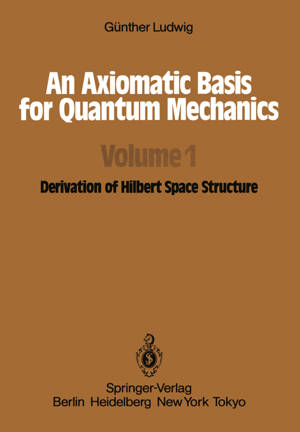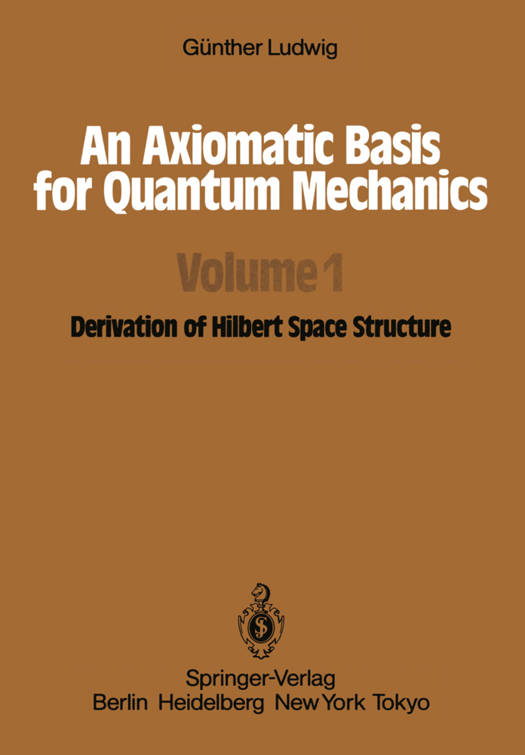
Je cadeautjes zeker op tijd in huis hebben voor de feestdagen? Kom langs in onze winkels en vind het perfecte geschenk!
- Afhalen na 1 uur in een winkel met voorraad
- Gratis thuislevering in België vanaf € 30
- Ruim aanbod met 7 miljoen producten
Je cadeautjes zeker op tijd in huis hebben voor de feestdagen? Kom langs in onze winkels en vind het perfecte geschenk!
- Afhalen na 1 uur in een winkel met voorraad
- Gratis thuislevering in België vanaf € 30
- Ruim aanbod met 7 miljoen producten
Zoeken
An Axiomatic Basis for Quantum Mechanics
Volume 1 Derivation of Hilbert Space Structure
G Ludwig
Paperback | Engels
€ 105,59
+ 211 punten
Omschrijving
This book is the first volume of a two-volume work, which is an improved version of a preprint [47] published in German. We seek to deduce the funda- mental concepts of quantum mechanics solely from a description of macroscopic devices. The microscopic systems such as electrons, atoms, etc. must be detected on the basis of the macroscopic behavior of the devices. This detection resembles the detection of the dinosaurs on the basis offossils. In this first volume we develop a general description of macroscopic systems by trajectories in state spaces. This general description is a basis for the special de- scription of devices consisting of two parts, where the first part is acting on the second. The microsystems are discovered as systems transmitting the action. Axioms which describe general empirical structures of the interactions between the two parts of each device, give rise to a derivation of the Hilbert space structure of quantum mechanics. Possibly, these axioms (and consequently the Hilbert space structure) may fail to describe other realms than the structure of atoms and mole- cules, for instance the "elementary particles". This book supplements ref. [2]. Both together not only give an extensive foundation of quantum mechanics but also a solution in principle of the measuring problem.
Specificaties

Alleen bij Standaard Boekhandel
+ 211 punten op je klantenkaart van Standaard Boekhandel
Beoordelingen
We publiceren alleen reviews die voldoen aan de voorwaarden voor reviews. Bekijk onze voorwaarden voor reviews.









